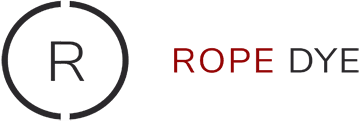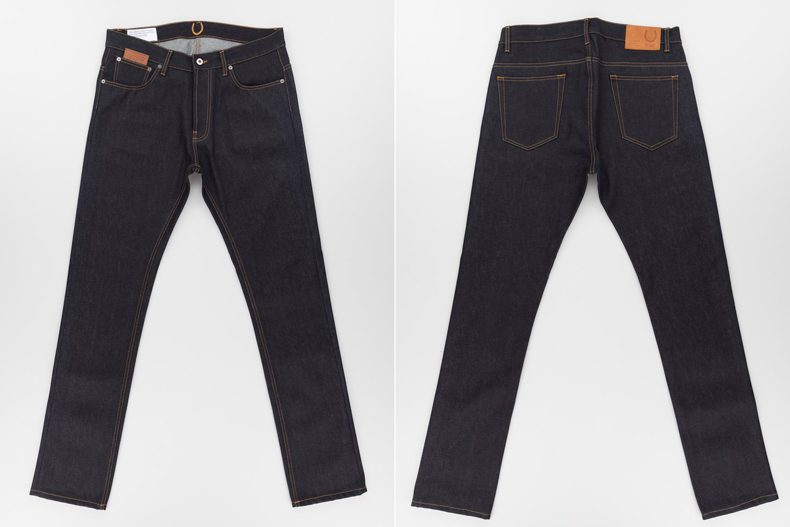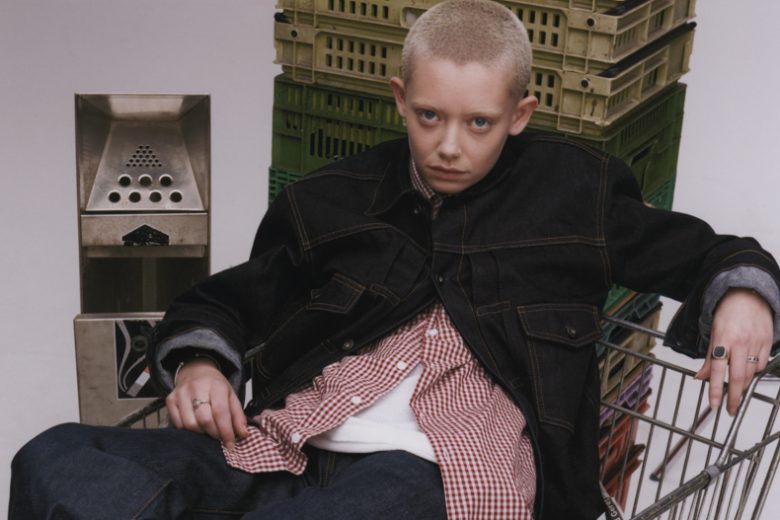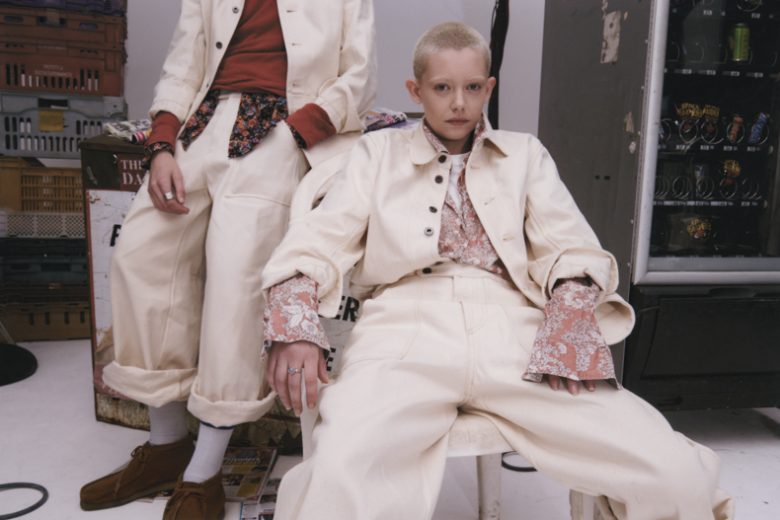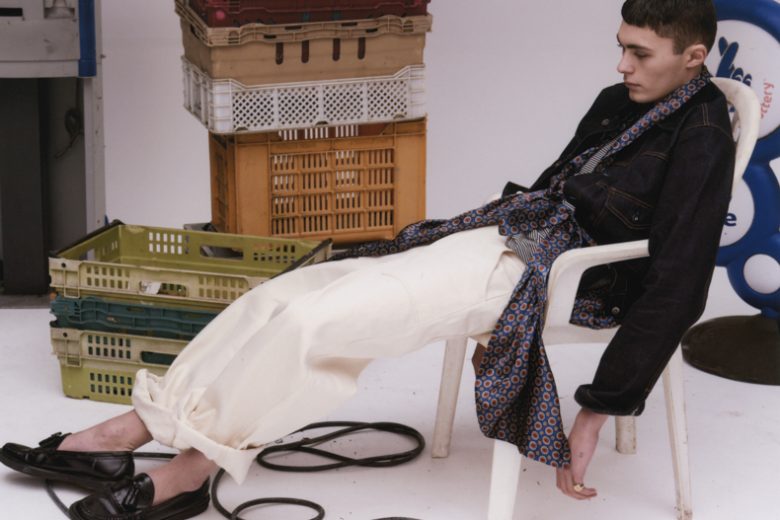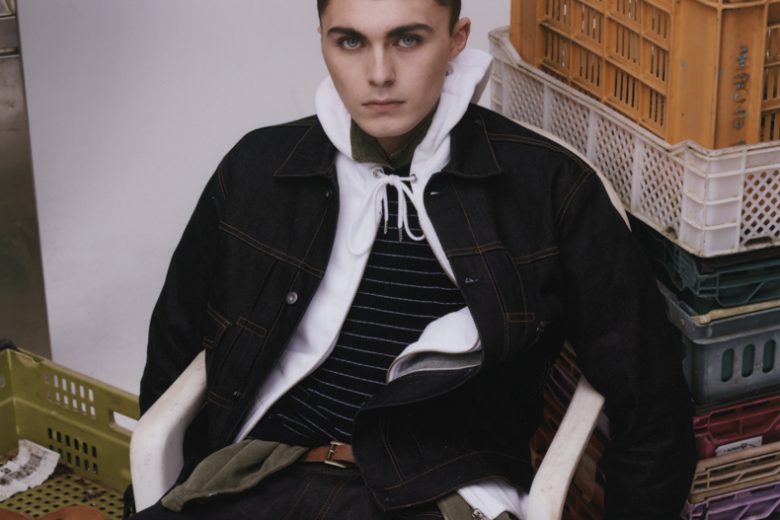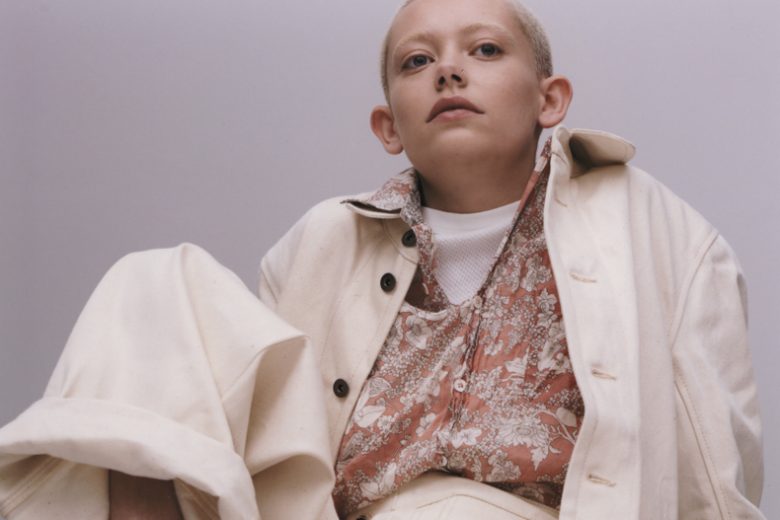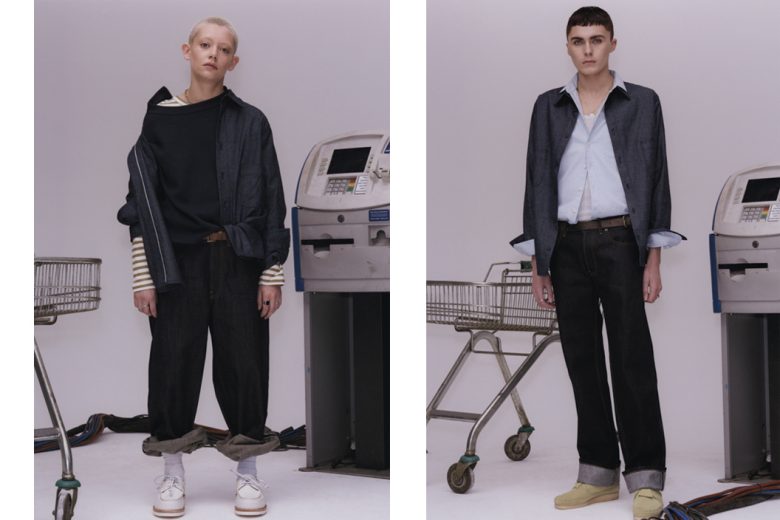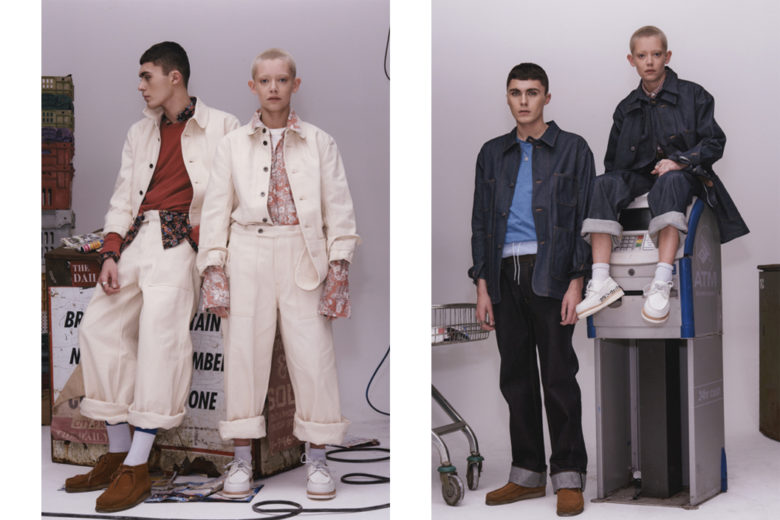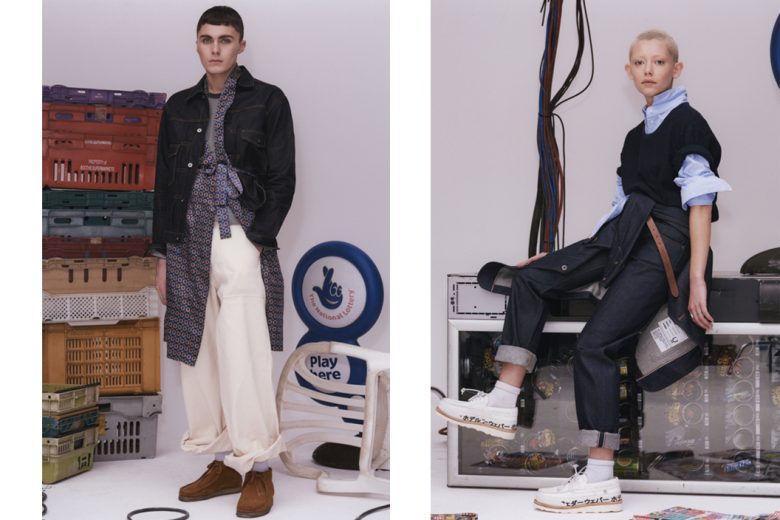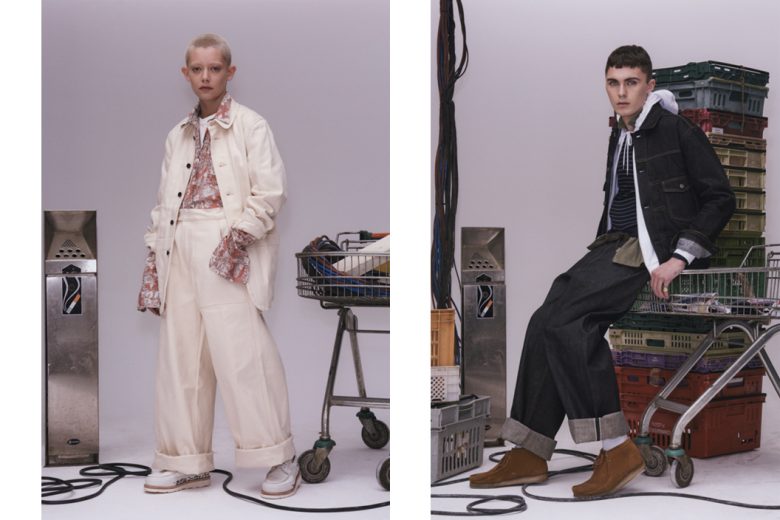Two fabric tubes, a theft and a meeting a huge Finnish dude in a McDonald’s carpark. It’s an unlikely start to this fascinating brand.
It is a compelling concept Gavin, Chris and Kyle of ULLAC have. Or perhaps the concept is not the key to this brand. It is the execution.
They have a direct to consumer business model. They draw on workwear for inspiration. Quality is essential. They produce all their garments in the most ethical way possible. All admiral points indeed but nothing groundbreaking.
It’s their execution of the above 4 points that have created something amazing.
Instead of selling us the “direct to consumer” line as a way to save us money. The guys see this as a way they can have a conversation and build a relationship with their customers.
Then there are the garments themselves… again they take the familiar and do it differently.
Workwear simply had to be “one fit, fits all”. It was the nature of the form following function. Ullac has drawn on that intrinsic quality that workwear inherently possessed and created garments that are “gender neutral”.
The aesthetic is fascinating. The cuts and silhouettes are recognisable and pull heavily on British workwear from their native North England. I know these garments, I recognise them but I have never seen them presented in this context. Just enough familiarity to keep the collection anchored but the right amount of innovation to really grab the imagination. The cuts range from classics perfectly executed, to the slightly exaggerated but not overly so. Treading that line which could so easily fall to clownish and keeping it classic and to be honest, just downright cool.
Throw this into the mix with their dedication to quality and ethical manufacture. You have a brand that I am very excited to see develop.
But let’s hear from the guys themselves on how this all came to pass.
Rope Dye: Who are you and what do you do?
ULLAC: We’re a little collective of three. There’s me (Chris), Gavin and Kyle. Kyle and I are brothers and Gavin is our best mate. We make dead nice jeans and clothes, mostly gender neutral and mostly denim.
Rope Dye: Who are you and what do you do?
ULLAC: We’re a little collective of three. There’s me (Chris), Gavin and Kyle. Kyle and I are brothers and Gavin is our best mate. We make dead nice jeans and clothes, mostly gender neutral and mostly denim.
Rope Dye: How did the brand get its name?
ULLAC: Gavin lives in Helsinki so there’s a bit of a Nordic/Scandinavian influence in all of our thinking. ULLAC is actually an ancient Scandinavian word. There isn’t a direct English translation but it basically means ‘Three brothers who love clothes, making lovely clothes’
Rope Dye: How did you get into the denim business?
ULLAC: We’d been talking and dreaming about setting this up since we were kids growing up in Preston (Northern England). Then about a year and a half ago, July 2016, Gavin bought a sewing machine and a few meters of fabric and tried to teach himself to make jeans. In reality, we knew that Gavin’s sewing machine wasn’t going to be what we’d use to start making jeans. Well, at least I knew that Gavin was still pretty impressed with his own needlework. But it was the catalyst. We started thinking that actually, we could do what we’d always talked about when we were kids. We started working out what it was that we had always wanted out of our favourite brands and how we could make that a reality. In a way we’d been doing research for this for years, just growing up being obsessed with clothes and jeans, where they come from, how they’re made, the mills etc. But there was a whole lot of other research and work to.
We made our first two patterns in November 2016. They actually got stolen from outside of my flat in London. Our pattern cutter had sent them to me in the mail to me but the box didn’t fit through my letterbox so the postman left it outside and someone pinched the box. I had no idea until I got a call out of the blue from this guy who had found the box on the London Underground. Luckily the box had my number on it. So I met him outside McDonald’s in Manor House. He was a great big Finnish dude, it was so kind of him to do that and we all took it as a sign.
By February we had found a family atelier we wanted to work with. They go by the name of “the Dini’ in Italy. They made up our first prototypes which we were just in love with. So after a bunch of tweaking and perfecting, we went into production with a small run. Then we all took a huge leap of faith, quit everything else and went for it!
Rope Dye: You clearly have a passion for denim and clothing with history, how did it all begin?
ULLAC: I suppose this has ties back to the question of influences, probably the most crucial one being people. I love people, there are so many of us and we’re all different and the only thing we truly share is we’re humans and we all wear some sort of garments, that’s all affected constantly, depending on our backgrounds, what we do for a living, where we live, what subculture’s we’re part of, what subcultures we where part of and what subcultures we want to be part of.
I love when a situation requires people to wear a certain piece of clothing which is picked up by other humans who want to use that reference as a form of expressing themselves; Sagging or wearing your jeans low for example, this comes from the prison system in America where inmates weren’t allowed to wear belts and prisons had few appropriate sizes so inmates trousers ‘sagged’.
This was then picked up by the hip-hop and skater community in the 90’s as a rejection of the norm, it’s a nod to a community that a society would want to have little focus. When that was made cool by hip-hop community it was a little injection of dignity back into the prison yard which I think is warm, and even if it was an accident these communities communicated through clothes.
Clothes are the front line of expression that as humans, the majority of us engage with. I’m fascinated and inspired by people who use clothes that have a function, throughout history and now. Often our clothes will have a classic tone, and there will be some period cultural references but it’s all people that inspire me, each item of clothing we make is a tapestry of influences of humans yesterday, today and hopefully tomorrow.
Rope Dye: What is the concept of ULLAC?
ULLAC: There are three points that define the concept of ULLAC. At the heart of each of them is that ULLAC is for everyone.
1. We want to make dead nice clothes an accessible thing. We grew up in the North of England where it was hard to get nice clothes. Then the internet happened and made it easier but a kid in the North still has it harder because they end up paying way more than the folks in London who can get into the best shops. So by not working with shops and retailers, we can change it. It also means that we get to have a conversation and a relationship with everyone that’s wearing our garments and we love that.
2. Our world is gender neutral and we want the rest of the world to be like that. So we make the same clothes for girls and boys.
3. We make everything ethically. We work with good people and ethical suppliers. Every part of each garment comes from an independent producer, and we try to be as green as we can. All of our denim comes from the greenest mill in Italy and is 40% BCI cotton.
Rope Dye: What inspires you when crafting a garment?
ULLAC: Its hard to define, it’s a bit of a progressive dance. There are a million things dancing and switching partners in my head, people, shapes, album covers, the music we listen too, home, Japanese streetwear, Finnish posture, subcultures, classic and modern scary stuff. To some people, it might fall in the workwear family but our silhouette is often way bigger and way weirder. We’re from Preston and that’s a big influence. Plus workwear isn’t what people wear to work in the north.
I like to make things that can be made by girls and boys. I’ve always been fascinated with how one garment can look different on different people. So I like to make stuff that can be worn in loads different ways. Like our PATTERN 011 work jeans. They’re really wide leg jeans – they can have a bit of a 30s worker silhouette to them if you cuff them normally or wear a turn-up. But if you roll them up they take on a totally different shape. I love that.
We want our clothes to be an investment. We want them to last and get better and better with use, so it’s super important that everything is super well made. The construction has to be spot on, and all the fabrics, materials and hardware have to be top drawer. We feel very much like everyone who buys something is a new friend, so everything has to be perfect.
Rope Dye: Why do you think denim has become so popular recently (over the past decade)?
I think it’s always been there. The thing about denim is that it’s been part of pretty much every single youth culture movement in some way or another since kids got a hold of the clothes that their parents wore to work and made those clothes subversive. So it’s always been a really prevalent thing.
I think the reason good denim has become more popular over the past decade is that folk get a bit sick of being force fed something. A particular trend will pop up and all of a sudden the big retailers will grab a hold of it and start churning out their version. Very often those garments will be poorly made, with cheap materials. And almost certainly they’re made in unethical ways. They’re basically disposable and that’s not always reflected in price either.
But it’s really hard for big retailer types to replicate that with good denim. Because it’s expensive to make for all kinds of reasons. It’s more artisanal and therefore more ethical. It’s a slow process to make good denim, and to put together a really well-made pair of jeans is also costly so the big retailers don’t want to do it. So in a way, I think the popularity is a rejection of that disposable, fast fashion stuff and a sign of people becoming a little more socially aware which is ace.
I also think people (like me) like being into stuff. There is so much care and attention detail to enjoy in good clothes. There’s stuff to geek out on. You can be a collector, you can be an enthusiast.
Rope Dye: What do you love the most about denim?
ULLAC: Mostly I just love how it looks. You can wear it in so many ways and anyone can wear it. I love how a pair of jeans can look one-way on one person and totally different on another. I love how denim looks when it’s brand new, and I love how it changes with wear. Just love it all.
Rope Dye: How do you wear and treat your dry denim jeans – any special routines?
ULLAC: I love that day one brand new crispy feeling that only dry denim has so there are a few days when I like to try and preserve that. This is all a bit strange but I’ll try not to bend my legs too much when I’m walking and wear them if I know I’m going to be standing up rather than sitting down. But then when you start breaking them, that’s when they really start to get good. I like to keep them dry for as long as I can because I like the contrast that not washing them produces. I keep them in the freezer if they start to smell a little bit. I know not everyone buys into that, and there’s debate about if it’s just a bit of a denim head myth but freezing to clean isn’t a new thing or the preserve of the denim geek. In super cold places, people have been freezing their stuff to clean it forever. In Finland where Gavin lives, as the temperature drops in the autumn (and it REALLY drops) folks bring out their rugs and furniture to freshen them up after summer. There are these great big communal rails to hang rugs over, it’s a cool thing to see. I’m totally aware it’s not a miracle cure though.
Freezing and not washing is very much a preference thing though too. Really washed jeans are ace too and I’ve got plenty of those in my wardrobe.
Rope Dye: What do you recommend your customers to do regarding breaking in their jeans?
ULLAC: So we’ve got a couple of recommendations to customers who are breaking in their jeans. First up, enjoy the brand new day one crispy stage, it’s nice and it doesn’t last long. Then just wear em, wear em, wear em. Get a little bit dirty in them, do as much stuff in them as you can. Break them in on your body over time and they’ll become perfect.
Not washing them helps with that process so we recommend that. But unwashed jeans start to hum pretty bad so we send all our jeans out in a sail cloth bag so that folks can keep them in the bag in the freezer and not contaminate their food.
Actually, we love seeing that process so much if our customers post a picture every time they wear their jeans or jacket for the first 300 wears we’ll swap them for a new pair.
Rope Dye: Is there another brand that inspires you?
ULLAC: There are loads of inspiring brands. I like a lot of playful Japanese stuff. I love what KAPITAL do, a really interesting mix of Eastern and Western influences with ace interpretations of military, utility and western wear. I think VISVIM are ace too. Maison Kitsune are dead good, lovely playful stuff.
There’s a London brand called Bethnals, I love their stance on gender neutrality too. Very cool.
Rope Dye: Are there any up-coming or unknown brands that you think are worth looking into?
ULLAC: W’MENSWEAR are cool as hell. They’re a new womenswear brand making work wear which has historically been a pretty masculine scene.
Rope Dye: Where will ULLAC be five years from now?
ULLAC: Exactly where are now but with loads more new friends wearing our clothes.
